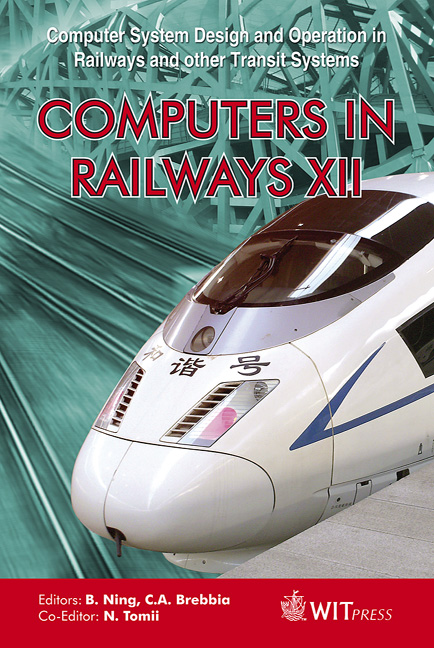Train Scheduling Of Shinkansen And Relationship To Reliable Train Operation
Price
Free (open access)
Transaction
Volume
114
Pages
7
Page Range
133 - 139
Published
2010
Size
515 kb
Paper DOI
10.2495/CR100131
Copyright
WIT Press
Author(s)
S. Sone & Y. Zhongping
Abstract
This paper explains why security is important, especially in Asia, as well as safety, and how we established reliable transportation in the Japanese Shinkansen, mainly in relation to train scheduling. The authors also describe several ideas actually taken by Shinkansen in order to realise reliable operation even in the case of possible disturbances. Out of many ideas, some examples of which are shown here, selective adoption according to the purpose of the railway or line is strongly recommended, together with given conditions taken into account. Keywords: disturbance, punctuality, reliable operation, spare time, train scheduling. 1 Introduction Features of east-Asian high-speed railways are very dense passenger flow together with frequent train operation with a big capacity. In order to realise reliable transportation in this circumstance, safe train operation in a narrow sense, which is guaranteed mainly by signalling system, is not enough; secure passenger flow must also be guaranteed even when some traffic disturbances take place. This is the reason why the authors present this paper, which mainly deals with security rather than safety, for the special invited session of "Traffic Control and Safety of High-speed Railways in Asia". Just after the inauguration of Tokaido Shinkansen in 1964, we had many disruptions to train operation due to rain and snowfall, breakdown of the power feeding system, deterioration of track conditions due to excess axleload, etc. In a narrow sense of safety, the Japanese Shinkansen carried more than nine billion passengers without any casualty by train accident, which is by far the safest
Keywords
disturbance, punctuality, reliable operation, spare time, train scheduling





